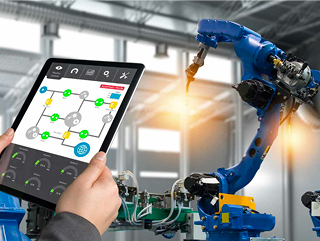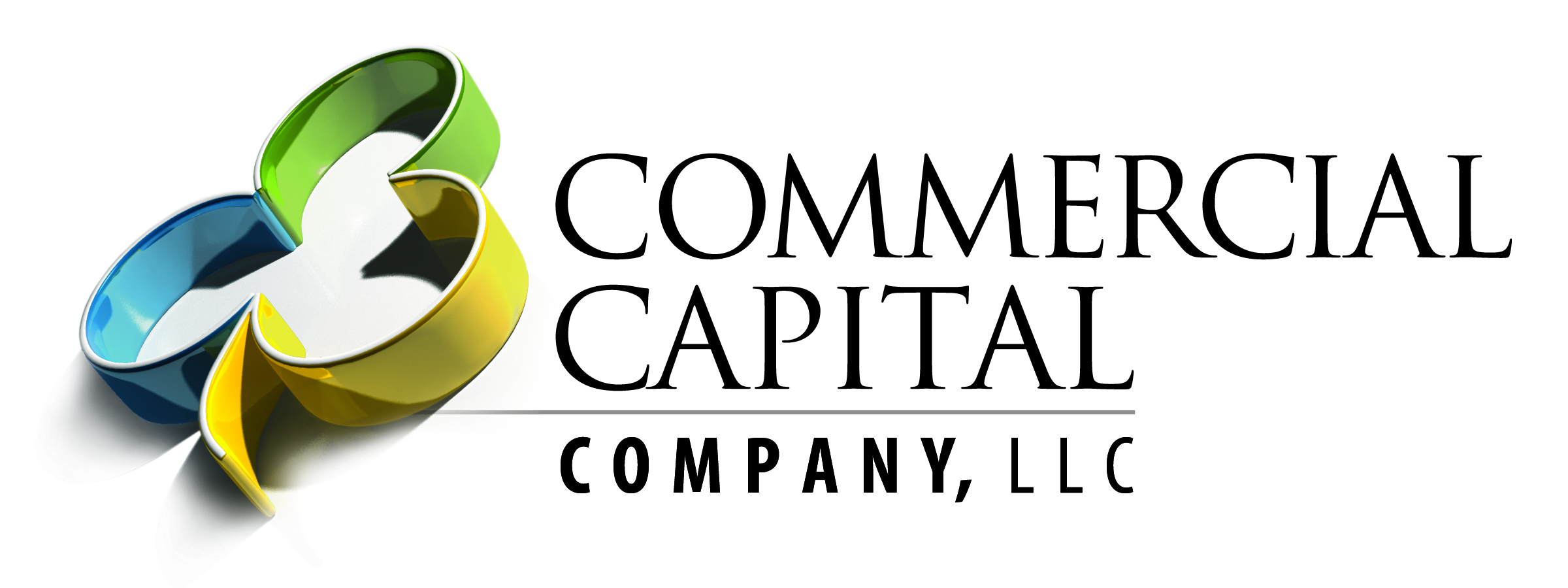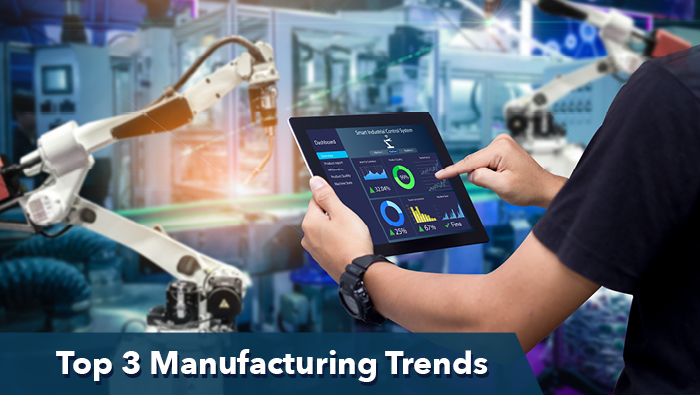Maximizing Productivity And Mitigating Risk
Manufacturers in the United States account for 11.39% of the total output in the US economy, employing 8.51% of the workforce.
Looking ahead to the rest of 2022, we see the impact of the COVID-19 pandemic’s continued effects on manufacturing and put plans in motion to mitigate further risk. As we continuously redefine the new normal, we look to the top trends driving the industry.
1. Smart Factories and IIoT
 In 2022, manufacturing facilities and factories seek to improve efficiencies by adopting and implementing more full-featured systems, utilizing the potential of data analytics and communication between machinery and central monitoring tools. The Industrial Internet of Things (IIoT) via its interconnected sensors, instruments, and other devices, connects management to the shopfloor and accelerates decision-making. This enables owners and management to streamline operations, reduce costs, and improve worker safety. Antiquated systems and equipment continue to be phased out in favor of the control and efficiencies provided by smart equipment.
In 2022, manufacturing facilities and factories seek to improve efficiencies by adopting and implementing more full-featured systems, utilizing the potential of data analytics and communication between machinery and central monitoring tools. The Industrial Internet of Things (IIoT) via its interconnected sensors, instruments, and other devices, connects management to the shopfloor and accelerates decision-making. This enables owners and management to streamline operations, reduce costs, and improve worker safety. Antiquated systems and equipment continue to be phased out in favor of the control and efficiencies provided by smart equipment.
Implementation of smart technology enable manufactures to keep pace with competitors that have the same objectives.
The costs of intelligent equipment and smart factory software continues to decline. A reduction in overall operating costs become more obvious.
 2. Supply Chain Reassessment
2. Supply Chain Reassessment
The worldwide supply chain disruption of 2020 continues to adversely effect us in 2022. The previously normal status quo has been irrevocably changed for nearly every facility and business. Owners and facility managers seek creative ways to add flexibility and reliability while also retaining value. The supply chain will continue to be a focal point for continuous monitoring, management, and improvement.
The need to do business closer to home was made obvious with reshoring becoming a necessary way to bolster continuity and meet pressing deadlines. In 2022, reshoring will become a more feasible and necessary supply chain solution, evolving beyond a stop-gap measure to become a more conventional way of operating.
3. Dealing With A Diminished Labor Force
Companies must be more agile and efficient in addressing the skills gap and labor shortages. As demand for manufactured goods grow, factories are missing opportunities if they don’t increase capacity and throughput to satisfy consumer needs. This requires a complete evaluation of all internal processes, identifying ways to increase efficiency/productivity and support the workforce while meeting current market expectations.
 Some trends are perennial and familiar from those pre-pandemic days and some are new as a result of today’s unique challenges.
Some trends are perennial and familiar from those pre-pandemic days and some are new as a result of today’s unique challenges.
We may help with your challenges and objectives for 2022 and beyond to lead your operations into the this next decade. Looking forward, we strive to provide clear and actionable opportunities for both small business and enterprise firms. With over 25 years of experience in various industries, Commercial Capital Company provides equipment financing solutions for decision makers which enable them to build successful businesses and thriving communities.
Your Steadfast Financing Partner Since 1988
If you’re contemplating purchasing new equipment, please feel free to call us or stop by the office for a consultation. We have flexible lease options with competitive rates. We’ve helped thousands of companies grow their businesses for over two decades. Discover how we may help your business grow and succeed.
Contact Us
Call 913-341-0053 to talk to a leasing professional.
Equipment financing available – Apply Online.



